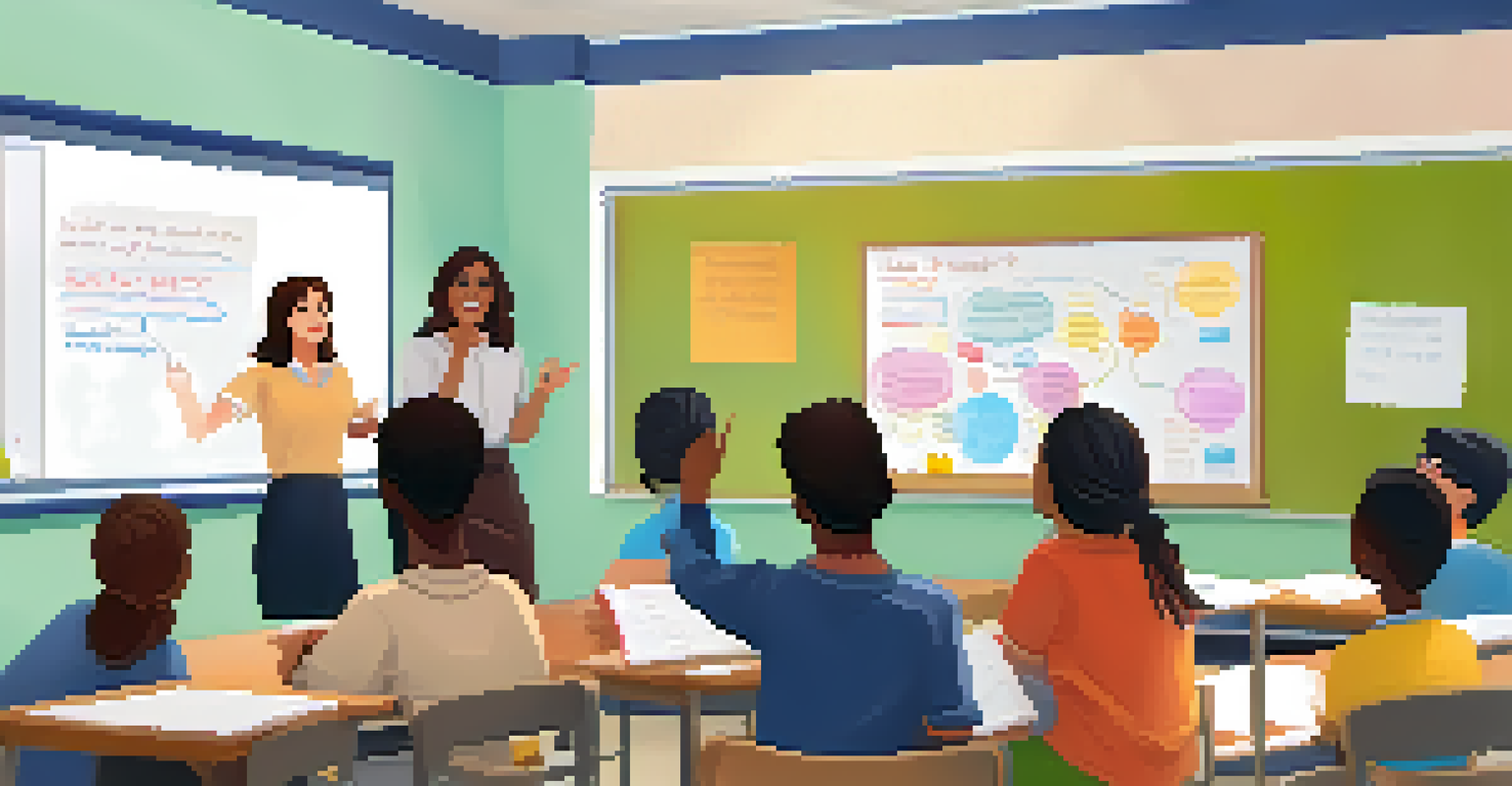The Role of Collaboration in Enhancing Critical Literacy Skills

Understanding Critical Literacy and Its Importance
Critical literacy goes beyond basic reading and writing. It involves analyzing texts, questioning the author's intent, and understanding the broader social context. By engaging critically, learners become more informed and empowered individuals.
The illiterate of the 21st century will not be those who cannot read and write, but those who cannot learn, unlearn, and relearn.
In a world overflowing with information, being critically literate is essential. It helps individuals navigate through various perspectives and discern credible information from misinformation. This skill is particularly vital in today’s digital age, where the lines between fact and opinion can often blur.
Collaboration plays a significant role in developing critical literacy skills. When individuals work together, they can challenge each other's viewpoints, leading to deeper understanding and more robust interpretations of texts.
The Benefits of Collaborative Learning Environments
Collaborative learning environments foster communication and sharing of ideas. When students engage in group discussions, they are exposed to diverse perspectives that can enhance their critical thinking. This exchange of ideas is crucial in developing a well-rounded understanding of complex topics.

In such environments, learners often feel more comfortable expressing their thoughts and questioning assumptions. This openness encourages a culture of inquiry, where students are motivated to delve deeper into texts and examine their meanings critically.
Critical Literacy Empowers Individuals
Engaging critically with texts helps individuals navigate information and become informed decision-makers in a complex world.
Moreover, collaboration can lead to improved retention of information. When individuals discuss and debate ideas, they tend to remember the content better, as they are not just passive recipients of knowledge but active participants in the learning process.
Strategies for Effective Collaborative Literacy Activities
To enhance critical literacy skills through collaboration, specific strategies can be employed. For instance, group projects that require analysis of different texts can provide students with the opportunity to discuss and critique. This peer interaction can deepen their understanding of the material.
Collaboration allows us to know more than we are capable of knowing by ourselves.
Another effective strategy is using literature circles, where each member takes on a role to explore a text from different angles. This approach not only promotes collaboration but also encourages accountability as every member contributes to the group's insights.
Lastly, incorporating technology can further enhance collaboration. Online discussion boards or collaborative tools like Google Docs allow for continuous dialogue, enabling learners to share thoughts and resources beyond the classroom setting.
Challenges in Collaborative Learning and How to Overcome Them
While collaboration can significantly enhance critical literacy skills, it’s not without challenges. Group dynamics can sometimes lead to uneven participation, where some individuals dominate discussions while others remain silent. This imbalance can hinder the collaborative process.
To overcome these challenges, setting clear roles and expectations within groups can help. By establishing guidelines for participation, every member can be encouraged to voice their opinions, ensuring a more equitable distribution of ideas.
Collaboration Enhances Learning
Working together in learning environments fosters diverse perspectives, leading to deeper understanding and retention of information.
Additionally, educators can facilitate collaboration by providing structured activities that promote inclusivity and engagement. Regular check-ins and feedback can ensure that all voices are heard and valued throughout the learning experience.
The Role of Educators in Fostering Collaboration
Educators play a crucial role in fostering collaboration among students. By creating a supportive environment that values diverse opinions, teachers can encourage students to engage in meaningful discussions. This supportive atmosphere is key to developing critical literacy skills.
Moreover, teachers can model effective collaboration techniques themselves. By demonstrating how to engage in constructive dialogue and respect differing viewpoints, educators can set the tone for collaborative learning.
Providing guidance on how to critically assess information during team discussions can also enhance students' critical literacy. Educators should encourage students to question sources and analyze arguments, equipping them with the skills needed to navigate complex texts.
Real-World Applications of Collaborative Critical Literacy
The benefits of collaborative critical literacy extend beyond the classroom. In workplaces, for example, employees often need to collaborate on projects that require critical analysis and problem-solving. Skills honed through collaborative learning can translate into more effective teamwork in professional settings.
Community initiatives also benefit from such skills. When individuals come together to address social issues, the ability to critically analyze information and collaborate effectively can lead to more informed decisions and impactful actions.
Educators Foster Collaborative Skills
Teachers play a vital role in creating supportive environments that promote collaboration and critical analysis among students.
Furthermore, engaging in collaborative literacy activities can empower individuals to become active citizens. By developing critical literacy skills, they can engage in informed discussions about societal issues and advocate for change in their communities.
The Future of Collaboration in Enhancing Literacy Skills
Looking ahead, the role of collaboration in enhancing critical literacy skills is likely to evolve. With advancements in technology, new platforms for collaboration are emerging, allowing for richer interactions among learners. This shift can lead to even more innovative ways to engage with texts critically.
As education continues to adapt to the digital age, integrating collaborative tools into literacy programs will be essential. This integration can provide learners with opportunities to connect with peers from diverse backgrounds, further enriching their critical literacy experiences.

Ultimately, fostering collaboration in literacy education will prepare students for the complexities of the modern world. By equipping them with critical literacy skills through collaborative efforts, we can empower the next generation to navigate information and make informed choices.